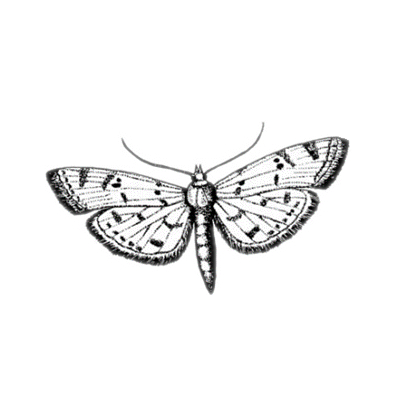Key to Order Lepidoptera
E. A. Heinrichs
Lincoln, Nebraska
Updated: January 2022

About
The lepidopterous pests of rice in West Africa consist of the skipper butterflies, noctuid and pyralid moths. Plant damage is caused by the larvae whereas the adult moths are nectar feeders. The larvae damage rice plants through the act of defoliation or boring in the stem. The stem borer larvae cause dead hearts (dead central shoots) when attack occurs in the vegetative stage and whiteheads (dead panicles) when attack occurs in the reproductive stage. The rice skippers (Hesperiidae) are pests at the rice reproductive stage. Skippers are so named because of their fast and erratic flight behavior-they skip from plant to plant. Skipper larvae feed on leaves at night. The noctuid (Noctuidae) moths are heavy bodied with a thick tuft of hairs on the thoracic dorsum. The noctuids, Sesamia spp., are the most polyphagous among the rice stem borers. Of the five Sesamia species that feed on rice in West Africa, the African pink borer, Sesamia calamistis, is the most common. There are several pyralid (Pyralidae) species that are common in West African rice fields. The pyralid moths are moderately small, delicate and slender built. The pyralid group consists of both defoliating species and stem boring species.